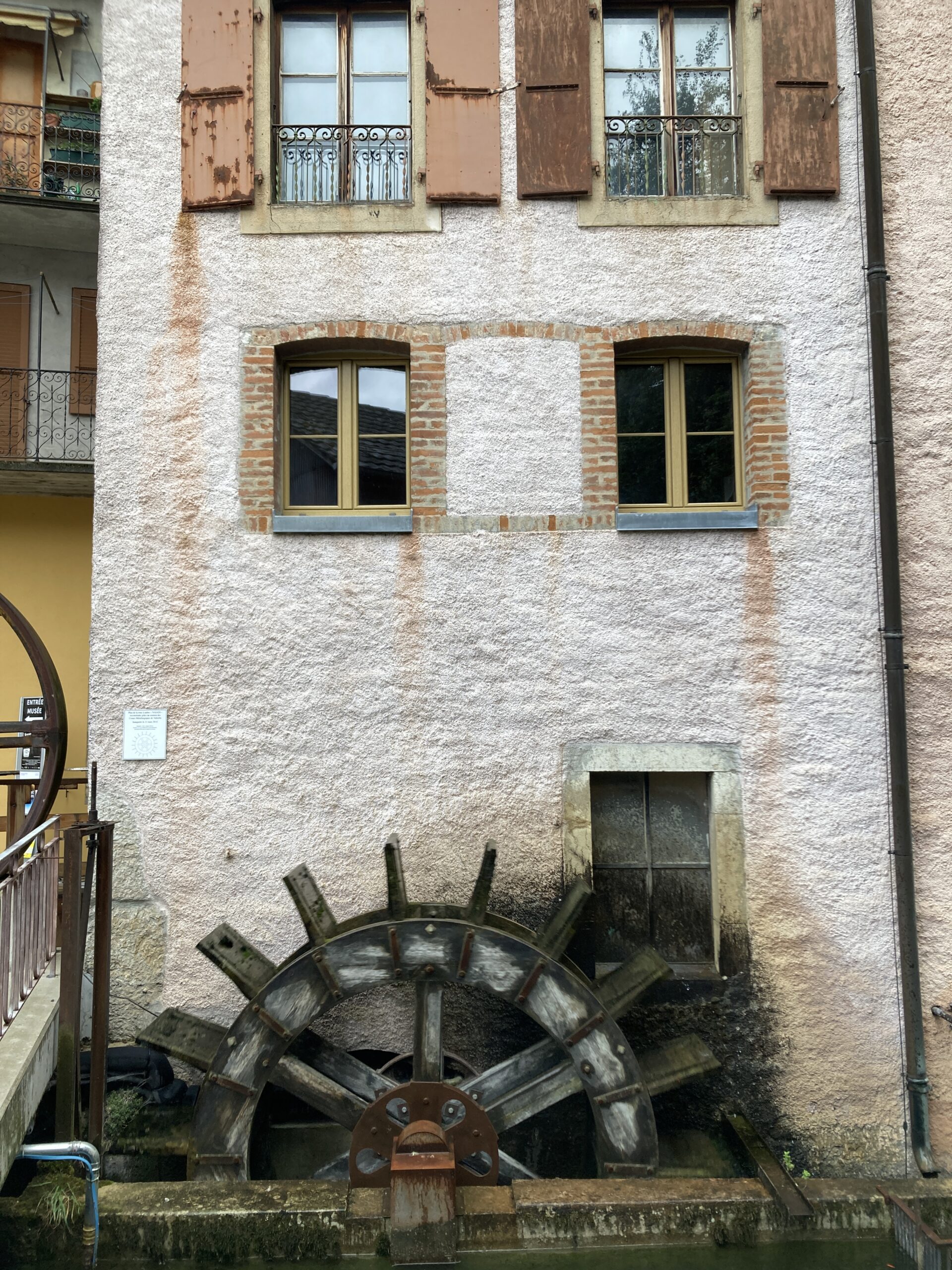Table of Contents
Two or three weeks ago a friend asked whether I wannted to go to the outdoor cinema so I thought “maybe” and last night I did. We went to see La Venue de L’Avenir by Cédric Klapisch.
Years ago I wrote an essay about Klapisch within the context of the Cinéma de L’Auteur. Author theory Cinéma. The concept is simple. Some directors are so individual in their art form that it stands out. The best known of these films is L’Auberge éspagnole which then had two more films made.
The outdoor cinema was outside the Théatre de Grand Champ. There was plenty of parking nearby where people could park. In theory you could even come by bike as you could theoretically keep it within sight during the entire film.
Many, many times, I have walked in front of the Happy Days diner in Nyon and last night I finally got to try one from the food truck they had on location. It was fine.
It’s funny to watch a film in this context because it was like a silent disco event. You go and pick up your headphones and then you listen to them through this, rather than from a speaker stack. This means that aside from a little more traffic when the film ends, it is quiet and considerate of neighbours in apartments and houses nearby. Since I am sensitive to noise pollution I really appreciate this gesture. I wish music festivals would do the same.
In this film a woman dies and the heirs are invited to pick four representatives to check out the house where their ancestor lived, before the property is turned into a shopping mall.
I love the thought experience that this film presents with. We see Impressionist France, and modern France. We see parallels between modern people, and their ancestors.
I am frustrated because it reminded me of a book we recently read for the book club, but now I can’t remember which one.
When I was driving home I was thinking of the scene where she is leaving the countryside on the ox cart, and there is a conversation with someone hanging on to the side. The journey then continues on a boat. In contrast other characters are using trains as transport, and conversing at a table with seats, rather than in cars.
I think that the use of alternative forms of transport is interesting in this film. We never really see cars, or traffic. We see two worlds where cars are not integral to the lives of these characters.
Sinners
Another film that plays across two time periods is Sinners, the US film that was shot in Imax and another special film format recently where two or more time periods are combined. There is a scene, where they are on the boat. “Wake up and come and see”. The boat was arriving in Paris and they were passing by the Eiffel tower when it was still new and special.
It is interesting how both Sinners and La Venue de L’Avenir explore contemporary and historical times in the way they do. One looks at blues music, and the other looks at painting, photography, with a clin d’oeil to the cinéma at one point with the mention of going to see a demonstration of the new invention, the cinématographe.
And Finally
It was interesting to go and watch a film outdoors. It was interesting to see how young people sat at the front on blankets, and others sat in lawn chairs, camping chairs and more. The film screen is an inflatable balloon designed for film projections.
At the beginning we had daylight so it made the image washed out, but as the night progressed image quality improved. At one point a car drove out and blinded us temporarily and at another moment a moth flew in front of the projector and cast a shadow. It was fun to watch the moon shift to the right as the film progressed. Imagine having the moon as a progress bar.
And finally, the screening was free, except for the rental of the “Transat” and paying for food from a food truck. Parking was also simple but I suspect that this is due to it being Wednesday night.
I would do it again.

Leave a Reply